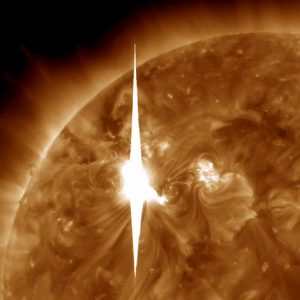Used to counter dim lighting situations, the average light bulb seems like a pretty self-explanatory invention—until it comes from the sun, that is.

On Aug. 20, the SOHO (Solar and Heliophelic Observatory) spacecraft captured a glowing eruption, distinctly shaped like a light bulb, from the star at the center of our solar system. This spacecraft was launched in December of 1995, about 930,000 miles away from the Earth, and snaps images of the Sun’s outer layer (the corona) by creating a fake eclipse within the instrument. SOHO has been capturing images of the Sun for years, but nothing ever quite like this.
NASA scientists proudly called this eureka moment a “Coronal Mass Ejection”, or CME for short. These storms are not too infrequent, but a good amount of time has passed since one held the distinct shape of a light bulb. Scientists also believe this peak in solar activity to be similar to the happenings in 2002, and that the increase in storms is associated with the switching of the Sun’s solar poles, which happens about every decade.
In a nutshell, this storm is a cloud comprised of plasma and charged particles, and is millions of times more potent than a volcano. When pointed towards the Earth, these storms have the possibility of causing solar radiation storms, and even disrupting technology and power grids. In fact, many speculators of upcoming Dec. 21, 2012, events believe that this is what is going to happen on that day—a massive solar eruption that will end up knocking out power and potentially all electronic devices on Earth.
Renowned psychic Jim Karol who performed at the University of New Haven on Thursday, Aug. 30, seemed to hold similar views regarding the state of the Sun and its condition. He believes that there will be an increase in solar storms, leading to possible technological problems on Earth. All anyone can really do is wait and see what the Sun has in store for the future, and hope that its storms have ceased for now.


















